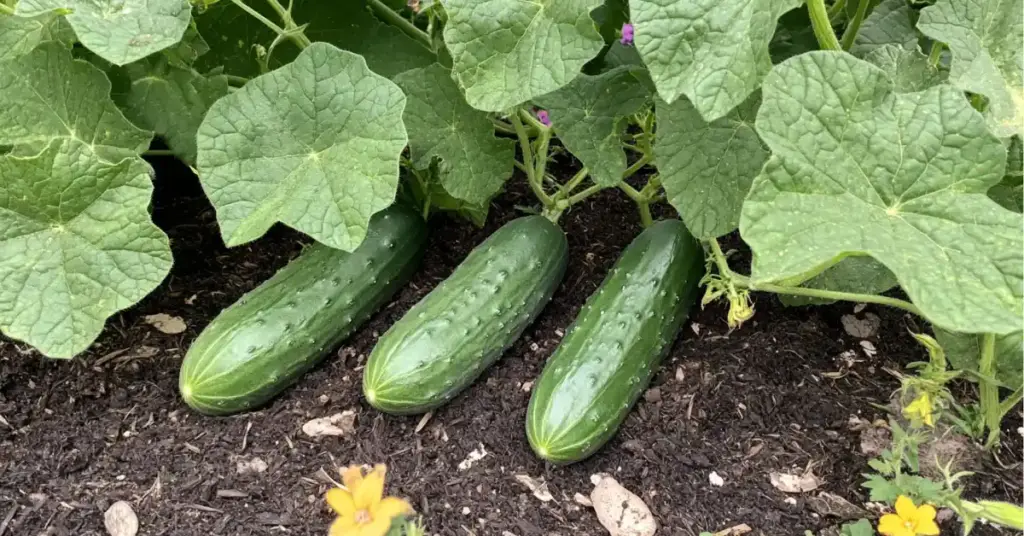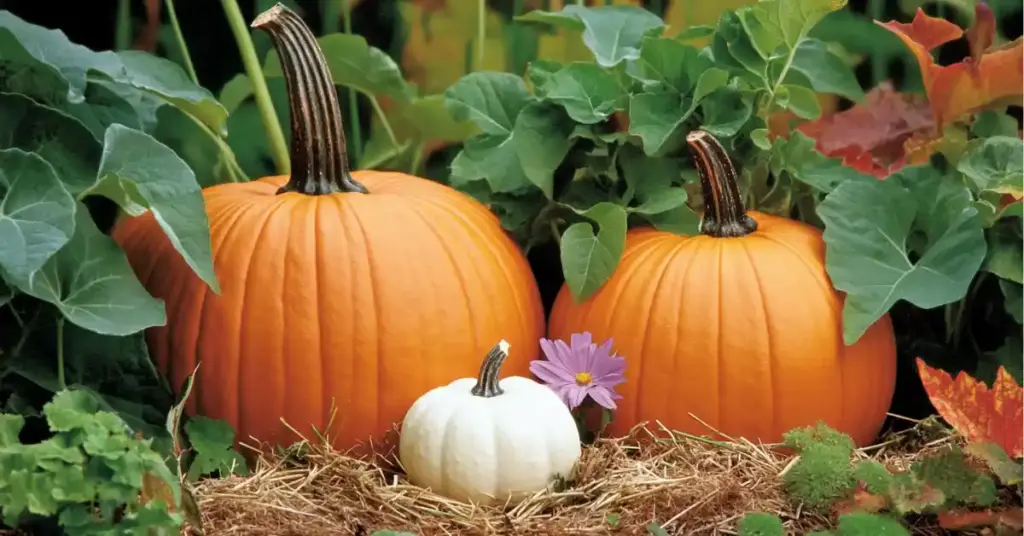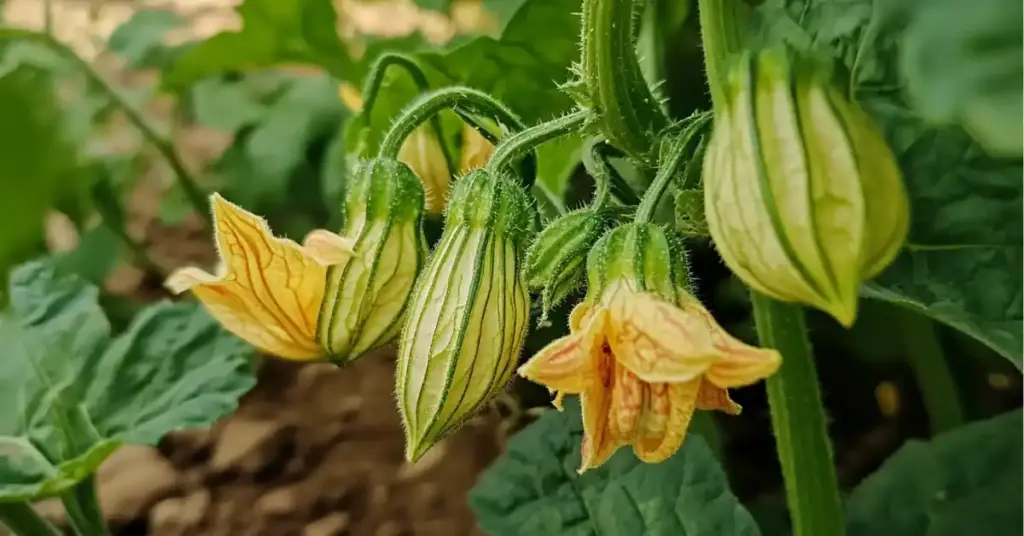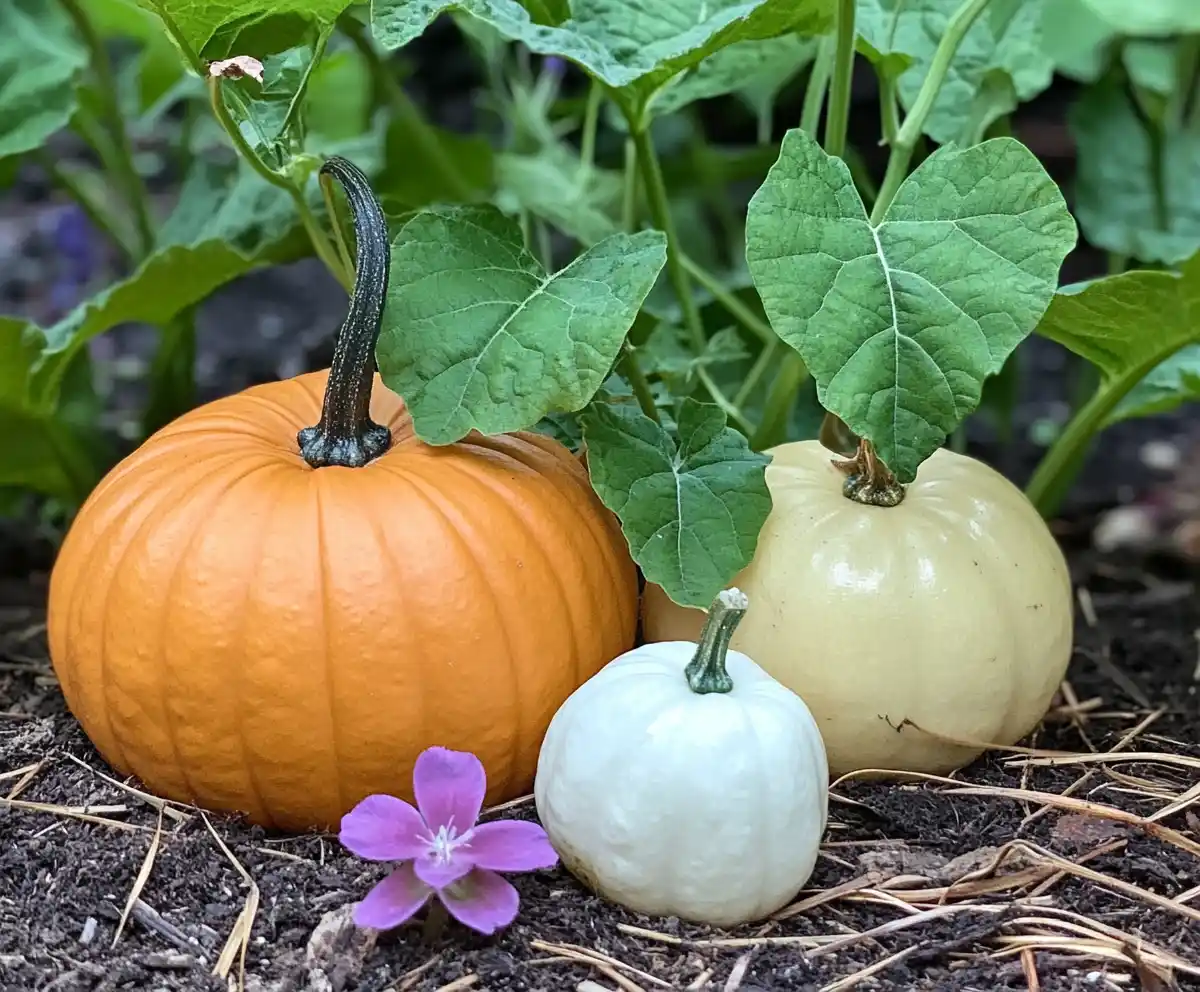Starting your first garden can feel like stepping into a whole new world — exciting, but also a bit intimidating. If you’re new to gardening, the good news is that you don’t need a green thumb to grow delicious, healthy produce right in your backyard. Choosing the right vegetables to grow for beginner gardening can set you up for success and build your confidence as you go.
In this guide, you’ll discover ten of the easiest and most rewarding vegetables to plant in your first garden. These beginner-friendly crops are low-maintenance, high-yielding, and resilient against common garden issues like pests and diseases. With the right approach, you’ll be harvesting fresh food with ease — and enjoying every step of the process.
Table of Contents
🥬 1. Leafy Greens: Spinach, Lettuce & Swiss Chard

Why they’re perfect: Leafy greens thrive in cooler weather, making them ideal for early spring and fall planting. They’re quick to grow and provide a continuous harvest when picked regularly.
Growing tips:
- Sow directly into the garden or start seeds indoors 2–3 weeks before your last frost.
- Choose a sunny spot with light afternoon shade in warmer months.
- Water lightly but consistently to avoid soggy soil and root rot.
- Swiss chard is a standout — it tolerates heat better and can grow all season long.
Pro tip: Avoid overwatering by checking soil moisture daily. Planting on slight mounds helps prevent soggy roots.
🍅 2. Tomatoes

Why they’re perfect: Tomatoes are among the most popular vegetables to grow for beginner gardening because they’re incredibly versatile and rewarding. From salads to sauces, their uses are endless — and with a bit of care, they’ll thrive in most home gardens.
Growing tips:
- Start seeds indoors 6–8 weeks before your area’s last frost date.
- Transplant into a sunny garden spot with at least 6–8 hours of light per day.
- Water deeply and consistently — especially during early growth and flowering.
- Use cages or stakes to support plants as they grow and bear fruit.
- Mulch around the base to retain moisture and reduce weed growth.
Pro tip: Add a flat stone next to each plant to reduce moisture evaporation during dry spells — a simple trick for healthier, more resilient tomatoes.
🥒 3. Cucumbers

Why they’re perfect: Cucumbers grow quickly and abundantly, making them ideal for beginners looking for a confidence boost. Their crunchy texture and refreshing flavor make them a summer staple.
Growing tips:
- Start indoors 3–4 weeks before the last frost or direct-sow once soil warms up.
- Choose full sun and fertile, well-draining soil.
- Water daily — especially during fruiting — to prevent bitter-tasting cucumbers.
- Trellis vining varieties to save space and improve airflow.
- Harvest frequently to encourage more fruit production.
Pro tip: Trellising not only saves space but also reduces disease risk by keeping fruit off the ground.
🎃 4. Pumpkins & Winter Squash

Why they’re perfect: These sprawling vines may take up space, but they make up for it with high yields and long storage life. Pumpkins and other winter squashes are forgiving and grow well in warm, sunny climates — perfect for beginner gardeners with a bit of room to spare.
Popular varieties:
- Butternut squash
- Spaghetti squash
- Acorn squash
- Classic pumpkins
Growing tips:
- Sow seeds directly after the last frost, or start indoors 2–4 weeks earlier.
- Plant in hills or raised mounds to improve drainage and reduce rot.
- Provide full sun and space for vines to stretch — up to 6 feet or more.
- Use a soaker hose to water deeply at the base, about once or twice a week.
- Mulch around plants to suppress weeds and retain soil moisture.
Pro tip: For extended use, harvest mature squash and cure them in a dry, shaded area for a couple of weeks — they’ll keep for months!
🥒 5. Zucchini & Summer Squash

Why they’re perfect: If you’re looking for one of the most productive vegetables to grow for beginner gardening, zucchini is it. A couple of plants can keep you well-supplied all season long.
Common types:
- Yellow squash
- Pattypan
- Crookneck
- Cousa
Growing tips:
- Start seeds indoors or direct-sow after your last frost date.
- Space plants 2–3 feet apart in a sunny location with moist, well-drained soil.
- Use a soaker hose for even watering and to prevent powdery mildew.
- Watch for squash bugs — inspect leaves regularly and remove eggs by hand.
- Mulch and rotate crops yearly to deter pests and disease buildup.
Pro tip: Opt for bush varieties if you’re gardening in containers or a small space — they produce just as well without the sprawl.
🌶️ 6. Peppers (Bell, Jalapeño, Poblano & More)
Why they’re perfect: Peppers bring bold flavor and color to your garden, and they thrive in containers or small beds — ideal for limited spaces. With a wide range of heat levels and varieties, there’s something for everyone.
Popular types:
- Bell peppers (mild and sweet)
- Jalapeños (medium heat)
- Poblano (mild to medium)
- Cayenne (spicy)
Growing tips:
- Start seeds indoors 2–4 weeks before the last frost date for a head start.
- Transplant after soil has warmed — peppers dislike cold!
- Choose a sunny location with well-draining, fertile soil.
- Water deeply 1–2 times per week and mulch to retain moisture.
- Stake or cage the plants once fruits start developing to support weight.
Pro tip: Use dark-colored mulch early in the season to help warm the soil and speed up growth in cooler climates.
🥕 7. Carrots
Why they’re perfect: Carrots are low-effort and grow well in both traditional beds and deep containers. Their sweet, crisp roots are fun to pull from the soil — especially for kids!
Growing tips:
- Direct-sow seeds in early spring or late summer in loose, sandy soil.
- Avoid compacted soil, which can stunt or deform roots.
- Water deeply every 2–3 days to encourage strong root growth.
- Weed by hand to protect delicate seedlings.
- Thin seedlings once sprouted to prevent crowding.
Pro tip: Check maturity by gently brushing back soil to inspect root size. Harvest when roots reach desired thickness — usually within 6–8 weeks.
🌱 8. Peas
Why they’re perfect: Peas are among the first crops you can harvest in spring, making them a hopeful sign that the growing season is underway. They’re also easy to manage and great for succession planting.
Best varieties for beginners:
- Sugar snap peas
- Snow peas
- Garden (shelling) peas
Growing tips:
- Direct-sow 4–6 weeks before your last spring frost, or 6–8 weeks before your first fall frost.
- Plant in cool weather with well-drained soil — avoid soggy spots.
- Water lightly but consistently; overwatering can cause root rot.
- Provide a trellis or stakes for vertical growth and air circulation.
- Harvest frequently to encourage continued production.
Pro tip: Use deep mulch to suppress weeds and protect the shallow roots — peas are delicate and don’t like disruption.
❤️ 9. Beets
Why they’re perfect: Beets are fast-growing, nutrient-rich, and offer a dual harvest: flavorful roots and leafy greens. They’re ideal for beginner gardeners who want a versatile and resilient crop.
Growing tips:
- Direct-sow in early spring or late summer in well-drained, sunny spots.
- Thin seedlings to 3–4 inches apart to allow room for roots to grow.
- Keep soil moist but not waterlogged.
- Weed gently to avoid damaging roots — hand-pulling is best.
- Harvest in 50–70 days, or once roots are about the size of a golf ball.
Pro tip: For longer storage, cut off the beet greens before refrigerating — it keeps the roots fresh for weeks.
🧅 10. Onions
Why they’re perfect: Onions are a hardy staple in nearly every kitchen — and a forgiving crop for beginners. They store well, resist pests, and grow happily in most garden types.
Growing tips:
- Choose between seeds or bulb sets — bulb sets are easier and faster for beginners.
- Plant in loose, well-drained soil in early spring.
- Space bulbs about 4 inches apart in full sun.
- Add compost between rows to retain moisture and improve soil health.
- Harvest once tops turn yellow and flop over — usually by late summer.
Pro tip: Cure onions in a dry, shaded space for two weeks after harvest. This improves flavor and shelf life for months of storage.
🌿 Bonus: Green Beans (Bush & Pole Varieties)
Why they’re perfect: Fast-growing, low-maintenance, and fun for kids to pick — green beans are an ideal bonus crop for new gardeners. Whether bush or pole, they’ll produce continuously with minimal effort.
Growing tips:
- Direct-sow after the last frost in well-drained, sunny soil.
- Water consistently and provide a trellis for pole varieties.
- Harvest every 2–3 days to keep plants productive.
- Avoid harvesting when plants are wet to reduce disease risk.
Pro tip: Beans thrive when picked often. The more you harvest, the more they grow — a win-win!
🌱 General Gardening Tips for Beginners
Starting your own garden doesn’t have to be complicated. By following a few simple guidelines, even first-time gardeners can enjoy a productive, stress-free season.
🗓️ When Should You Start a Garden?
The ideal time to start a garden depends on your climate and the vegetables you choose. Most beginner gardeners benefit from starting seeds indoors 6–8 weeks before the last expected frost in spring. This gives seedlings a strong head start and extends the growing season.
Tips for success:
- Check your local frost dates using reliable tools like the Farmer’s Almanac.
- Start fall crops mid to late summer, depending on your region’s first fall frost.
- “Harden off” indoor seedlings by gradually exposing them to outdoor conditions over a week or two before transplanting. This helps prevent transplant shock.
🧰 What You Need to Start a Garden
You don’t need a full farm or expensive gear to grow your own food. A basic setup is more than enough for beginner gardening success.
Starter checklist:
- A few packets of vegetable seeds
- Sunny garden bed, raised bed, or large containers
- Basic tools: hand trowel, hoe, rake, gloves
- Water source: watering can or hose with gentle spray
- Mulch for moisture retention and weed control
- Optional: a garden planner or journal to track your progress
No backyard? Look into community gardens or container gardening on a balcony or porch.
🌿 Start Small and Grow with Confidence
When choosing vegetables to grow for beginner gardening, less is more. Focus on 5–6 easy, enjoyable crops that your family loves to eat. This keeps your garden manageable and lets you build skills without stress.
Over time, you’ll learn when to start seeds, how to deal with pests, and how to maximize yields. Gardening isn’t just about the harvest — it’s about enjoying the journey.
❓ FAQ: Vegetables to Grow for Beginner Gardening
🌿 What are the easiest vegetables for beginners to grow?
The easiest vegetables for beginners include leafy greens (like lettuce and spinach), tomatoes, zucchini, carrots, and green beans. These crops are low-maintenance, quick to grow, and highly rewarding.
🕒 When should I start planting my garden?
Most vegetables can be started indoors 6–8 weeks before your region’s last frost. For fall crops, start seeds mid to late summer. Always check your local frost dates to plan properly.
🪴 Can I grow vegetables without a backyard?
Yes! Many vegetables grow well in containers. Peppers, lettuce, carrots, and bush beans are perfect for patios, balconies, or small raised beds. Community gardens are also a great option.
💧 How often should I water my vegetable garden?
Most vegetables need 1–2 inches of water per week. Water deeply and less frequently to encourage strong root growth. Use a soaker hose or mulch to maintain moisture and reduce evaporation.
🐛 How do I deal with pests naturally?
Natural pest control options include neem oil spray, companion planting, and hand-picking pests like squash bugs. Keeping plants healthy and well-spaced also reduces disease and infestations.
🌻 Conclusion: Grow with Confidence, One Vegetable at a Time
Starting a garden doesn’t have to be overwhelming. By focusing on the best vegetables to grow for beginner gardening, you’ll build experience, confidence, and — most importantly — enjoy the process. These ten vegetables are resilient, productive, and perfect for learning the basics while producing fresh, delicious food right at home.
Start small, grow what you love, and celebrate every leaf, pod, and root you harvest. With each season, your garden — and your skills — will only get stronger.
Now it’s your turn: What will you plant first in your beginner garden?


